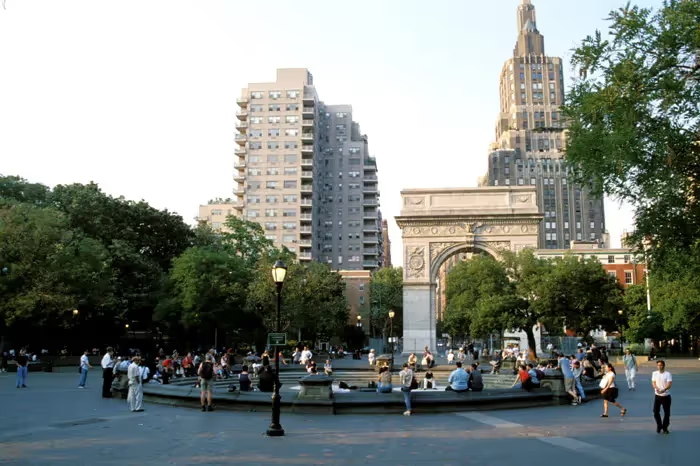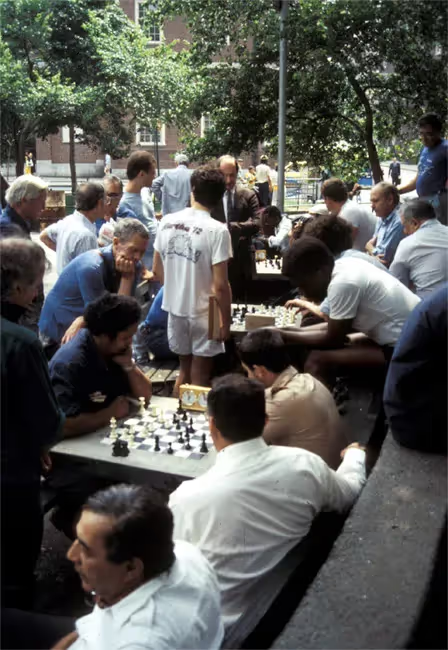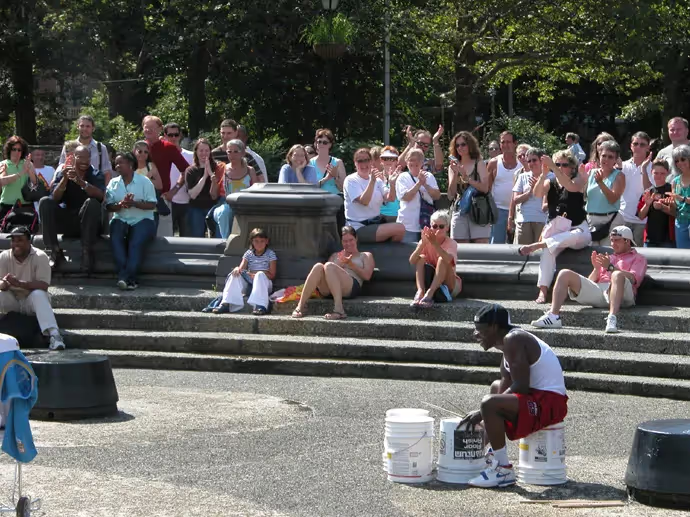A biweekly newsletter with public space news, resources, and opportunities.
A curated dispatch on all things public markets plus the latest announcements from the Market Cities Program.
Please note that these Hall of Shame nominations were written in a moment in time (most over a decade ago) and likely have since changed or even been transformed. If the above entry is now great, or still not so great, go ahead and comment below on how it has evolved or nominate it as a great place.

Located in the heart of Greenwich Village, this historic park is characterized by its large, central fountain, proximity to New York University and triumphal stone arch.

Because of its proximity to New York University, a residential neighborhood, and the stores and clubs of the Greenwich Village, Washington Square Park is a major center of community activity, used by so many different groups use that it has become a microcosm of New York City. In some ways the park's biggest asset - its popularity - is also its detriment, due to the incredible demand that the heavy use puts on its physical infrastructure. The park's design encourages activity, with paths laid out so that people cut through it, and facilities to attract people of all ages, including playgrounds, chess areaa, and a dog run. The central fountain and triumphal arch serve as focal points that create a space for people to gather, see and be seen.
Built in the 1820's on the site of a former potter's field and then public gallows, the Washington Square Park went through a series of redesigns and additions to achieve its current, well-known state. Initially, the park was a cemetery for yellow fever victims in the late 1700s; in its next incarnation, the park was a parade ground and a site for public hangings. In the latter part of the 19th century, it became a desirable residential area for the upper classes gradually moving uptown (as exemplified by Henry James' Washington Square), escaping the disease and congestion caused by the advent of immigrants to downtown New York. Surrounding the park today are original rows of red brick, high-stooped houses that have been preserved as historic landmarks, and now serve as NYU administrative offices.
The park has always been a famous 'beatnik' hangout popularized by the likes of Bob Dylan, Alan Ginsberg, and Jack Kerouac, in part because of its natural vicinity to NYU and the cafes on Bleecker, Macdougal, and Sullivan Streets. These factors also made this park a favorite of West Village residents. However, by the middle of the 1960s, this peaceful, bohemian, and poetic park soon became populated by vagrants and derelicts.
In 1964, plans to redesign the park surfaced with much controversy between the "traditionalist" residents and the "modernist" Park Commissioner. Esteemed West Village residents, such as Eleanor Roosevelt and Jane Jacobs, believed that the Park Commissioner's plans for renovation would violate the park's natural character, and that the park needed simple renovations in keeping with its unique and quaint style. Most importantly, Jacobs and the other dissidents felt that the park had to be closed off to automobile traffic to preserve it as a respite from urban life, and create an unbroken promenade surrounding it. Eventually the Parks Commissioner agreed to the residentsÍ wishes.
The park enjoyed a brief revitalization following its new design, but then began to deteriorate into a center for drug dealing by the 1980s, following the decline and recession the entire city underwent at the time. In the '90s, it was reclaimed thanks to efforts by an active local community, and a police crackdown under Mayor Guiliani's administration. But even this success was not without controversies over the use of hidden cameras to monitor park activity, and the regulation of artists and vendors.
There are only a few drawbacks to Washington Square Park, most of which center around issues of overuse: There is only moderate ground maintenance; while there is some pretty landscaping, the grounds often have litter. There are a lot of green areas, but there could be more. By lunchtime in the warmer months, the grass is usually covered by people and it is almost impossible to find a spot for oneself. And since the central fountain does not have much water, all the surrounding concrete and asphalt does not provide the feeling of a respite from the city on a hot day.








*Please note that these Hall of Shame nominations were written in a moment in time (most over a decade ago) and likely have since changed or even been transformed. If the above entry is now great, or still not so great, go ahead and comment below on how it has evolved or nominate it as a great place.